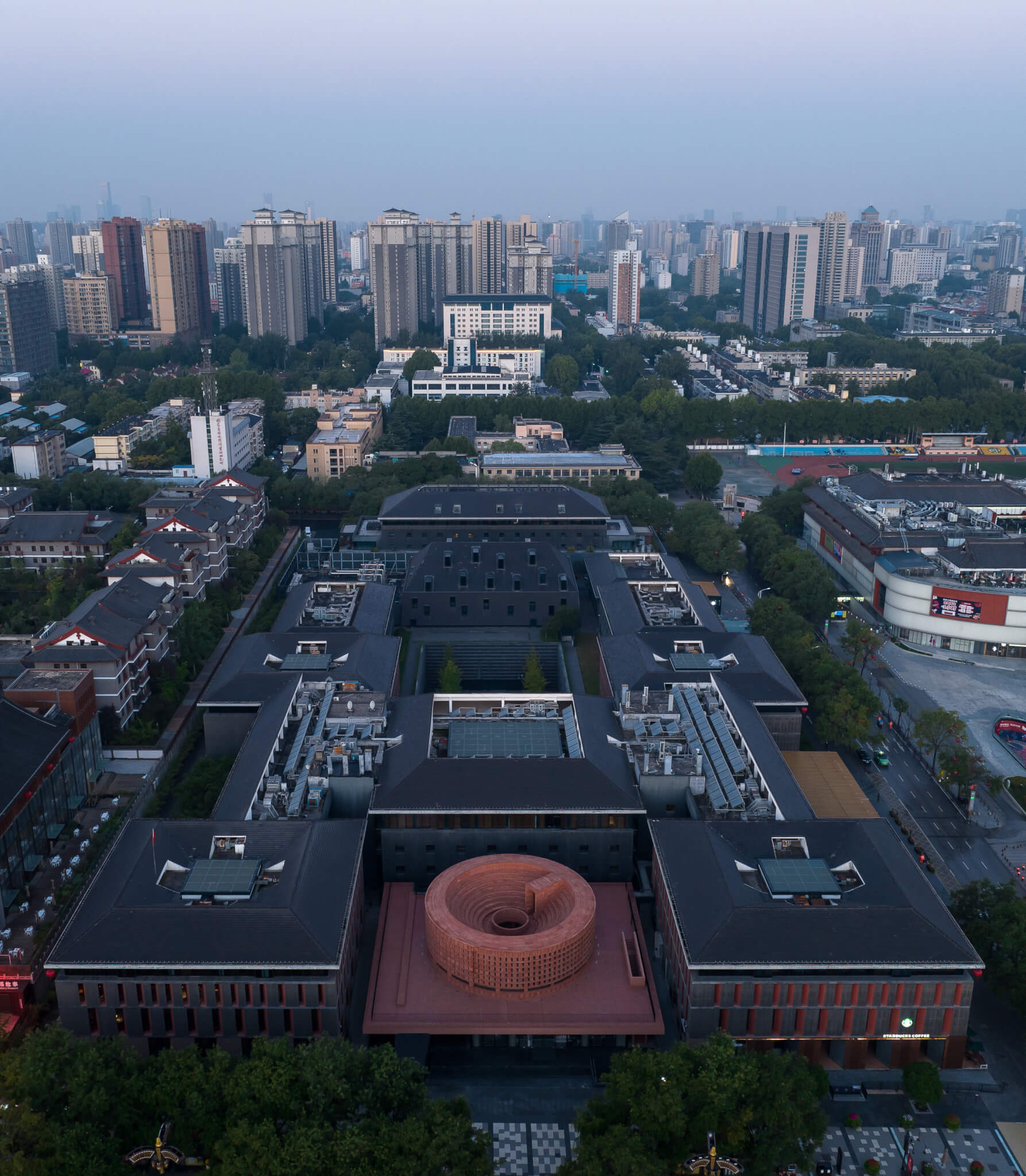Neri&Hu’s extension to the Qujiang Museum of Fine Arts weaves contemporary design into a historic site, an act which reinterprets the standard of cultural monuments in Xi’an, China. Located south of the city’s Giant Wild Goose Pagoda, built in the 7th century, the project is a gateway of sorts for Xi’an’s Datang Everbright City, a pedestrian mall which connects commercial and entertainment spaces to historic sites.
The client, Yungao Hotels (Group) Xi’an, sought out a “new architectural icon” at the museum’s East Entry, Neri&Hu told AN. In response to this, Neri&Hu said that it wanted to create “an anchor and a durable symbol of social history for the surrounding urban fabric,” in addition to simply fulfilling the project’s programmatic requests. The East Entry’s prior design “was a landscape with big strides,” the firm explained, that connected to the museum’s B2 level. The design team sought to preserve some of this in order to retain a straightforward pedestrian entry to the museum.

The post Neri&Hu extends the Qujiang Museum of Fine Arts with a red travertine facade appeared first on The Architect’s Newspaper.




